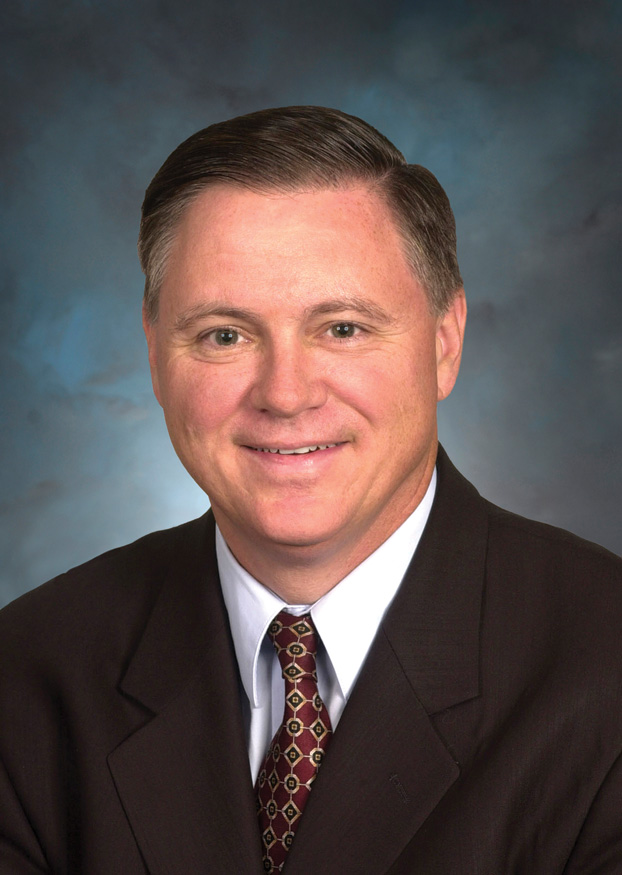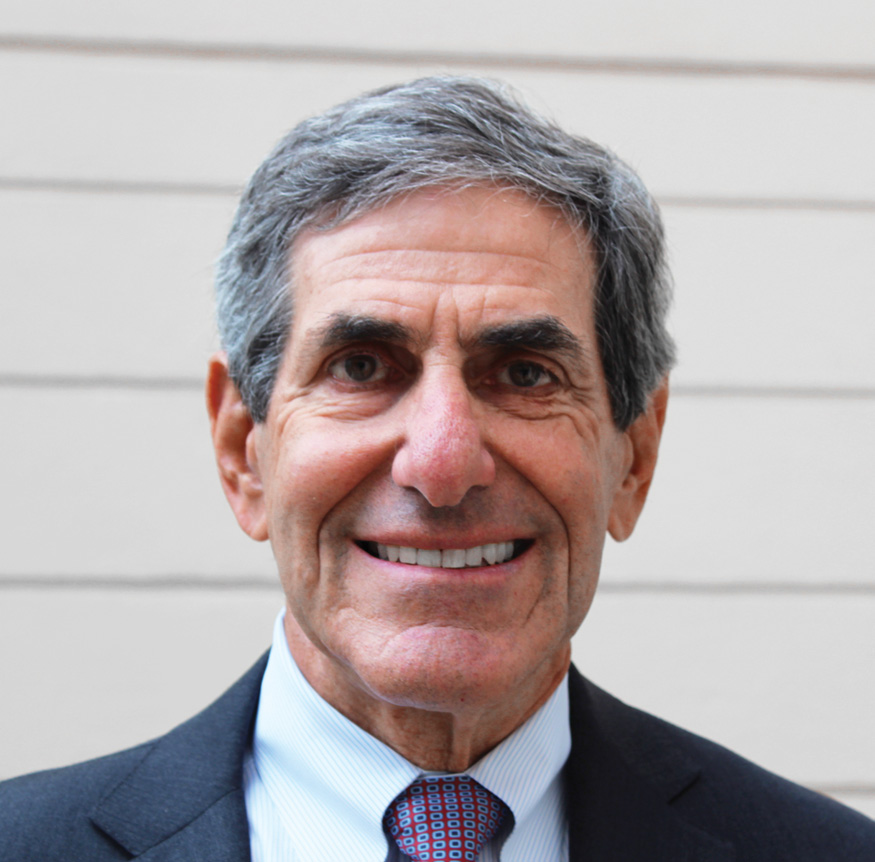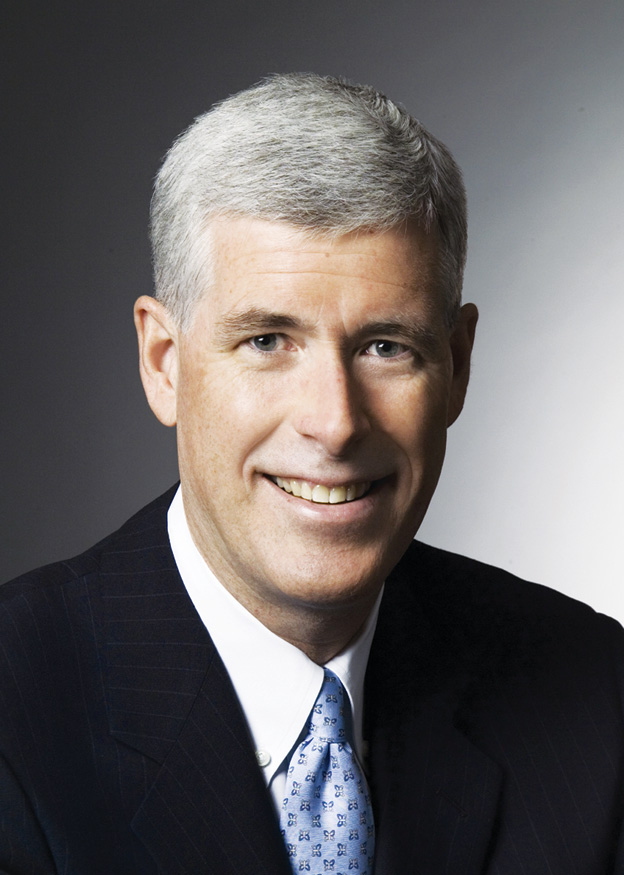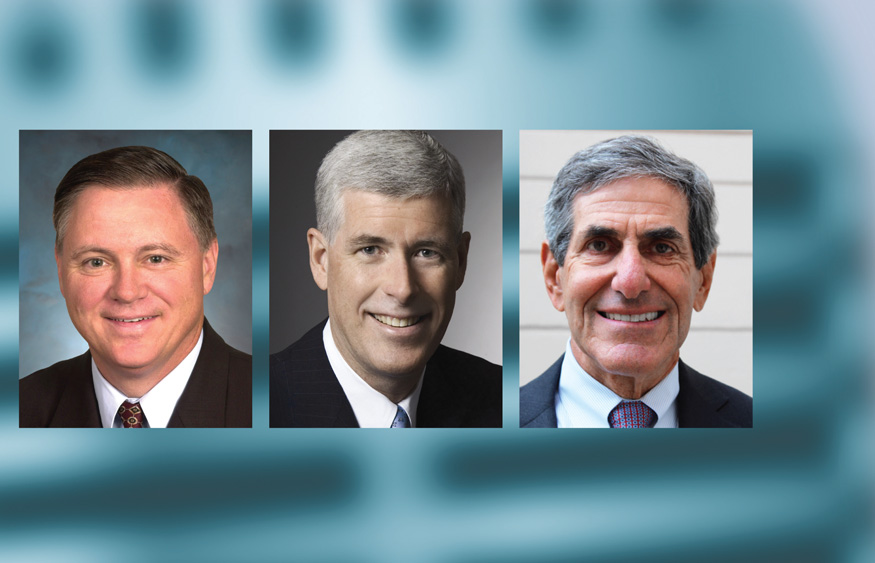Leadership Lyceum Podcast Summary
Tom Linquist is a partner at a leading global executive search firm. He is an expert on executive assessment and leadership development, and can be reached at Linquist@LeadershipLyceum.com.



“No one really knows how the game is played / The art of the trade / How the sausage gets made
We just assume that it happens / But no one else is in / The room where it happens.”
– Lin-Manuel Miranda, “The Room Where It Happens” from the Broadway musical “Hamilton”
Our foursome gathered on a crisp autumn day in our nation’s capital. I could barely contain my exuberance at being joined by two recently retired utility CEOs and a highly regarded member of both of their boards.
These were McKinsey & Co. Director Emeritus Dr. Les Silverman, former Lead Independent Director of Pepco Holdings Inc. (PHI), and Independent Director of Columbia Pipeline Group (CPG). And Bob Skaggs, former CEO of NiSource, and then CEO of CPG. And Joe Rigby, former CEO of PHI.
As a board member for both companies, Les Silverman was at the vertex of notable mergers and acquisitions transactions that took place under the leadership of each of these CEOs over the last two years.
At NiSource, Bob Skaggs presided over the separation of the gas storage and transmission assets from the regulated utility. He led CPG’s spinoff from NiSource into a standalone publicly traded company in July 2015, and the subsequent sale of CPG to TransCanada one year later.
Joe Rigby led the sale of PHI, or simply Pepco, to Exelon.
The NiSource – CPG transaction unfolded in a relatively smooth and speedy manner. The Pepco acquisition could only be described as epic and protracted.
Much has been written about the legal, financial, strategic, and operational details of these transactions. The complex human and social interactions that lead to these monumental decisions usually go unexamined.
Notwithstanding the perfect golf weather that day, we were not there to golf. My fabulous foursome gathered in the Pepco offices in Washington, in one of the rooms where it happened several months after the completion of their transactions. To reflect on the deliberations and perspectives of the executives and one of the non-executive directors who made it all happen.
Bob Skaggs: At NiSource, the company was comprised of a significant, large, multistate utility, but we also had a large natural gas pipeline company and a midstream company that were just beginning to grow.
Over the course of several years, management and the board asked ourselves, does that combination of assets make sense? Do the risk profiles match up? Are the businesses compatible? What are the financing requirements as both companies began to grow?
There were certainly strong points of view initially that the companies belonged together and that there was strength because they were in different parts of the energy industry. But as both companies’ growth accelerated and the demands for capital began to increase dramatically – and the risk profiles diverged as pipeline companies became quasi-unregulated – the management, the board and our advisors took a different look.
Over a period of time and quite a lot of study and deliberation, ultimately we concluded that the utility should stand alone with its own capital structure, its own credit rating, its own risk profile, and that the pipeline was better suited to be on its own.
However, we tried to use a thoughtful, deliberative process to come to the right answer for our shareholders and our stakeholders, and I’ll underscore stakeholders. For a management team and a board, choosing to split up a company that’s really doing quite well and thriving was a momentous decision.
Joe Rigby: Like many other companies, Pepco had an annual strategic planning process. Part of that discussion with the board always included a discussion of the mergers and acquisitions landscape. We were very fortunate to have many investment bankers who were willing to come in and talk to us about these possibilities.
I think what is a little bit unique about us is that we went through two very difficult situations. First, we had generating plants for which we were not the right owner. We sold them in 2009 and 2010 and were going to use the proceeds to bolster the balance sheet and then build the utility.
Then, in the latter part of 2010, we entered a very difficult period of operational reliability issues, particularly here in the D.C. area, where we were really challenged to earn our allowed returns. I can remember during the latter part of 2012 going into that planning retreat and concluding that if we couldn’t get better outcomes in terms of our return to our shareholders, we might have to look at other options. I don’t know if I’ve ever even mentioned this to [Director Les Silverman].
Consolidation in the industry was a possibility, and because we were improving our operational reliability, I understood we were going to become more attractive over time. Fast-forward into 2013, I had made a decision that I wanted to retire.
Les was about to become our next Lead Independent Director. I remember discussing the succession process at a board meeting, and saying we should not be surprised if we received offers.
So I felt that the expression of interest was somewhat inevitable, and the board and I were already chewing on what we had to do simply to get the return to our shareholders. As it played out, the day after I announced my retirement, I got a phone call from Chris Crane, CEO of Exelon, so it happened pretty quickly, but I don’t think we were surprised.
Les Silverman: I want to emphasize that these two guys are both thoughtful and they led very deliberative, strategic planning processes. It was always on the table that either company could be acquired or, for that matter, acquire others.
It was, as Joe indicated, certainly part of our annual process at Pepco. From the beginning, as the new guy on the board, when Columbia Pipeline Group was spun off from NiSource, we discussed the circumstances under which we would entertain offers, as well as those under which we might, in fact, go looking for offers.
We didn’t know exactly what our options would be over time. In CPG’s case, we didn’t know the role others might play in helping meet those capital needs. In neither situation was this unexpected or surprising. But there is, of course, that moment when you know that this one is serious and we’ve got to take it seriously. These transactions are always on the mind of the board members. When that call comes, we know how to move and act.
Joe Rigby: As I think back to the initial discussion with Chris Crane, the clarity that he brought from a commercial point of view was very helpful. Chris explained in a very granular way why this fit into Exelon’s strategy. It allowed me to go back to the board with more than just, ‘Hey, I got a phone call.’
We were able to go through that intellectual exercise and see the possibilities. Doing this somewhat from memory, I think that that would have occurred sometime in the end of January 2014.
By the end of February 2014, we had reached a point where we thought, we really want to do this in a more fulsome way. Not just take it out to any bidder, but to assess this offer with perhaps other expressions of interest to get a more fulsome view.
Bob Skaggs: Just to give you a little bit of the process, we spun the pipeline in July 2015. And, this is public information that’s disclosed in the proxy that went along with the transaction. We didn’t receive a call quite as quickly as Joe did after his retirement announcement. But within a matter of days after the spin, we had our first approach from an interested company.
That was scrutinized with a lot of care and thought. Although our transaction proceeded fairly quickly, I don’t think we short-circuited the deliberation process.
Les Silverman: Bob’s career plan was not irrelevant to the way the board thought about the Columbia transaction. He emphasized the clear thinking about the strategic plan, and from a board perspective, that’s crucial.
But you also need a management team to execute that plan. Part of your thinking on the board is about the value of a company going forward and how to think about that in the context of a potential transaction. That includes the leaders of the company who are going to carry out that plan.
Our Columbia board had enormous confidence in Bob. We had enormous confidence in the team Bob had built. Bob had let us know that his retirement was not necessarily a long way off, and that became a factor in deciding whether this was the right time and the right offer.
In thinking about the future against which we would compare an offer, we had to think about who that management team was going to be down the road. The numbers are important, but the people behind the numbers are also important.
Joe Rigby: I’ve had time to replay all this in my mind, but one thing that I would offer to you is that it was not the plan to sell the company. Even with the succession planning, the energy and the drive across the board and the management team was to run Pepco as an independent company.
Bob Skaggs: I would amplify and underscore that in our case, as well. We spun CPG out with all the intent to run it as a stand-alone, growing company. That was the complete expectation. In fact, the board wanted to ensure that we were properly positioned to do that.
Les Silverman: When we were first considering the decision to go ahead with the merger, the attorney we had hired, Joe Frumkin from Sullivan & Cromwell, said to our board, ‘Once you decide to go ahead with this, your role changes completely.
You will have really very little to do with driving a company through the transaction, but you’ll have a lot to do with saving it if the merger doesn’t go through.’
We spent most of the next twenty-three months in this boardroom talking about what to do if the merger failed. We had to keep our management team appropriately incentivized to keep delivering the value to the acquirer, but we also had to be prepared to oversee the running of the company if the merger failed.
We had just one bleak scenario after another for twenty-three months, because we had to be ready, we had to know what to do if the merger failed, which could’ve happened at any point. Certainly, it seemed quite possible, if not even likely, toward the latter part of this process.
Joe Rigby: I think it’s fair to say, and I’m sure it was the experience Bob had, that the further up you go there is a buy-in and a commitment that are at a very deep, emotional level. It was never lost on me the incredible honor it is to run a company and to lead a company.
If I back up to even before the offer came in, one of the great things we accomplished as a company was to take a severely damaged brand and work our way through to the point where we weren’t just in recovery mode, but had really almost come back.
In many ways, that galvanized the pride that the board felt, and became an issue when we were thinking about the possibility of selling the company because we had just gotten the company back on track. It was interesting to observe that deep emotional connection while simultaneously going through the intellectual process of assessing the offer. But everybody got there.
The other side of it is almost a two-part story. I think we did a good job calibrating expectations on the board and the Wall Street side, that this transaction would probably take twelve to fifteen months. Simply because we were going through multiple jurisdictions.
Our board meetings always included discussions of the merger, and also a discussion about our operational performance and the potential actions we’d have to take if the merger failed.
That all changed in August 2015, when the merger was denied in D.C. It was a significant challenge to reassure everybody that even if the merger failed, it would be survivable, but we were still going to make an effort to get this back on track. Over the next two to three months, it was very difficult to simultaneously plan for a different future and try to keep the transaction on track.
You had to know, literally the next day, exactly what you were going to do to send a message to the various constituencies about what this company was going to be. One of the best things about the board room is that it gives the CEO a place to be themselves, rather than always having to play the role of projecting absolute confidence.
For sure you need to do that with your employees, but I always appreciated how the PHI board allowed me to be myself in times of challenge. I mean, obviously, you want to project confidence, but you can be more yourself rather than the image of absolute confidence you need to project to the rest of the company.
Yeah, I felt confident, but, I’m human. I have doubts and concerns about things. I never felt that our board lost confidence in the management team because the transaction didn’t pass through the first time. It was much more of, ‘Let’s get focused on what we have to do to get this back on track, but also be super prepared if the deal does, in fact, fail.’
Bob Skaggs: We didn’t have a situation where there was political and regulatory uncertainty, but if I think back to what happened at NiSource and Columbia Pipeline, we announced that we were going to spin, separate the company, in the fall of 2014.
We were going to do it effective in the middle of 2015, so we had an organization fraught with uncertainty. Our employees were doing an incredible amount of work on a very fast track to separate the company, but we still had to move gas, produce electricity, and do all of those sorts of operational activities, even when we were separating the company and doing all of that work.
The board was a great ally, and the senior leadership folks out in the field just did a wonderful job of doing what they do. You do have to be pretty adept at compartmentalizing or segueing from one situation to the next.
Joe Rigby:I go back to when I became CEO in 2009. One of the things I did every year was go out and talk to every employee. It would take us maybe three or four weeks to talk to all five thousand, but I had a channel to actually talk to everybody about what was going on.
The company was small enough where you could do that over a reasonable period of time. They were hearing it directly from me, coming from the boardroom.
Les Silverman: I want to go back to the August event of 2015, after getting approvals from New Jersey, Delaware and Maryland. And Maryland was no slam dunk. That was the first time it looked like the merger was not going to happen, but we got a three-to-two vote in Maryland.
Then in D.C., which some had assumed would be easier than Maryland, it came down as a ‘no’, much to everyone’s surprise, and with the champagne corks ready to pop. A unanimous no. A unanimous denial.
I remember Joe calling me. I was on the beach somewhere, it was August, and we had to help the board through all five stages of grief in about a day and a half.
There was a lot of anger and a fair amount of depression. And when acceptance came, it was because we knew that Joe and his team, even if they didn’t have a plan right then, that they were going to have it.
Joe Rigby: At the end of the day, you’re dealing with people, and I think we did a decent job of allowing people to emote. The board is going to be part of the healing. They have the energy to go forward, even if it’s a tough road ahead, to get people focused on running the company and creating value, while stopping long enough so that people felt like their emotions were being acknowledged.
I think Les did a great job of holding the space for that dialogue to happen. I remember we immediately convened the board the afternoon we got the first denial.
Les Silverman: Between Joe and me, we spoke to every board member, kept everybody informed of where we were, got their reactions and expressions of concern or disappointment or hope or whatever was the case. There was a lot of confidence that we were going to come through this okay. If we end up on our own, that’s okay, we’re ready for it.
Joe and, obviously, colleagues at Exelon came up with another Hail Mary pass to throw, which turned out to be successful. It was the confidence we had in Joe and his team, and the relationship that Joe had formed with Chris Crane and the team at Exelon, that gave us confidence that this was worth another try. Even though there was certainly some risk to our go-it-alone plan by hanging in there for another eight, nine months.
If it didn’t happen, we were going to be that much further behind. But again, we brought out the numbers, did a careful analysis and thought that it was worth the shot, and it turned out to be. The more we talked about it, if not in those first conversations, then when we got everybody together. I think there was very quick coalescence around the plan going forward.
Joe Rigby: The point Les was making was that, as time went on, we felt like we were walking further out on a limb. From a legal point of view Exelon needed to stay in until the end of October 2015 when the merger agreement lapsed. This is where [Joe Frumkin of Sullivan & Cromwell] was particularly invaluable.
But at the moment when the merger failed, we didn’t have an immediate ‘Oh, it’s over.’ It was much more about going right back to making our best efforts to get the transaction done. Chris Crane was phenomenal about this.
We had a little time simply because of the term of the merger agreement. When we got past October 29, at that point, we had actually struck a settlement agreement with the city. And that gave us great confidence that we would probably get through this okay.
Candidly, at the end, it was a surprise that they approved it. I remember we got the order at 2:00 p.m. Les called me at 2:05 p.m. and wanted to know what the hell was going on because the stock price had just jumped.
I said, ‘You’re not going to believe it. They’ve approved the merger.’ He got here to the Pepco building by 3:00 p.m., and by 3:15 p.m. Exelon had moved money into the Wells Fargo account. By 5:00 pm we closed the transaction and I was unemployed. Other than that, it was just another day at the office.
To hear the full interview, please visit the podcast Leadership Lyceum: A CEO’s Virtual Mentor at Apple iTunes, or stream part one of the audio here:
Part One
Category (Actual):
Department:
